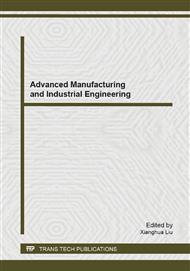p.857
p.863
p.870
p.874
p.879
p.884
p.888
p.892
p.901
Multi-Objects Ultrasonic Tomography by Immersion Circular Array
Abstract:
The typical application of ultrasonic tomography is the determination of process parameters like component flow rates and material fractions in industrial environment. Another promising application is non-invasive health monitoring in medical care. Both acoustic attenuation and acoustic impedance inhomogeneity are the main physical quantities that are used to reconstruct the image. When transmission ultrasonic waves are shadowed by hard tissue because of severe attenuation, the reflection mode can be an effective supplement. This paper provides multi-objects reconstruction images by reflection ultrasonic tomography, demonstrating the multi-objects imaging capability of an immersion circular array system. The circular array consists of 36 ultrasonic transducers with 0.5MHz frequency which are ring arranged and embedded in the container wall to serve as both transmitter and receiver. Each time one transducer is fired and in the meantime other transducers are enabled to receive signals. Ultrasonic transmitting, propagating and receiving of the circular array system are simulated by COMSOL Multiphysics® software, after that a series of image reconstructions of the objects with different numbers are obtained through ellipse algorithm.
Info:
Periodical:
Pages:
879-883
Citation:
Online since:
August 2014
Authors:
Keywords:
Price:
Сopyright:
© 2014 Trans Tech Publications Ltd. All Rights Reserved
Share:
Citation:


